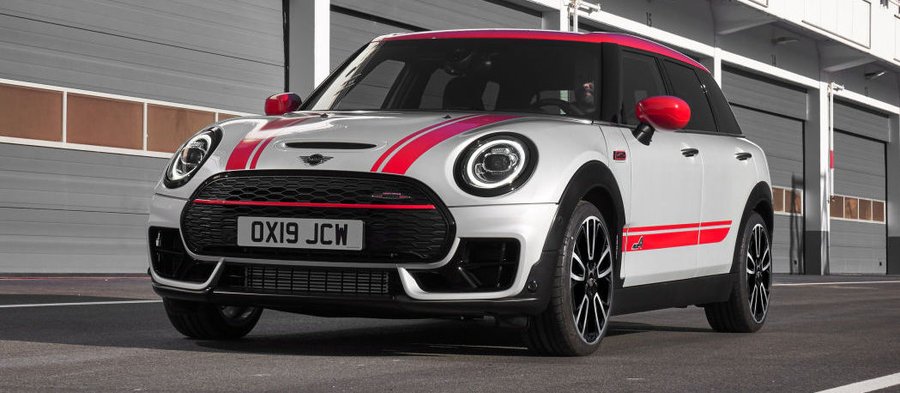Next-generation Mini Clubman could morph into a crossover

Mini knows selling station wagons in a market dominated by crossovers and SUVs is easier said than done. Since it can't beat them, it's considering joining them by making the next-generation Clubman more crossover-like than the current model, which proudly embodies its station wagon heritage.
Oliver Heilmer, the BMW-owned firm's chief designer, broke the news to British magazine Autocar. The publication pointed out the current-generation Clubman (pictured) is about as long and as wide as the Countryman, and the two models occupy the same price bracket, but it's outsold by its taller sibling. Making it an SUV would certainly give sales a significant boost, but where would this strategy leave the Countryman? Launching a smaller soft-roader is off the table, so one nameplate would grow in size. The Clubman might take the Countryman's spot in the range, allowing it to move up.
Nothing is set in stone yet, though putting the Clubman on stilts would better align it with the tastes of motorists in America, one of the brand's key markets. While Mini's sole wagon looks ready for a growth spurt, Heilmer stressed the retro-styled Hardtop — one of the brand's pillars — will remain true to its tiny roots when it enters its fourth generation in the coming years. Keeping the hatchback relatively small while carving out an acceptable amount of interior space and making it compliant with safety regulations around the globe is a huge challenge for Mini's vehicle development team. And, contrary to some industry rumors, going electric doesn't instantly solve the problem.
"It's not necessarily the internal combustion engine that needs the space. Even with an EV, which has a smaller motor, you still need a crash box. Crash performance is the bigger issue," the designer explained. He's hopeful his team will solve this problem in 2020, but he warned keeping costs in check is another priority. Clearly, designing a city-friendly car is more difficult than it used to be.
New technology might come to the rescue. Energy-absorbing foam could notably take the brunt of an impact, and allow designers to reduce the Hardtop's overhang. Other models would likely receive it, too, but Heilmer's team is primarily concerned about keeping the Hardtop's footprint in check. The rest of the range can — and, probably, will — continue to grow in the coming years.
All told, the Hardtop will remain the foundation the rest of Mini's range is built on. Keeping it true to its roots will allow the firm to stretch other models, like the Clubman and the Countryman, in different directions. "Mini started out as a brand that was very clean in terms of design," BMW design boss Adrian van Hooydonk told Autoblog in 2018 after revealing work on the fourth-generation Hardtop was under way. "Let's say that would be our goal, to arrive back at something that would be as clean and simple as the original, but offer the modern technology and safety features of today's cars."
Mini isn't expected to begin refreshing its lineup until the early 2020s, so we'll need to wait to see how it shapes its future range. The fourth-generation Hardtop will arrive first, we might see it in 2022, and the third generation of the modern-day Clubman will follow, on or off stilts, about a year later. The Countryman — Mini's bestseller — will get a minor mid-cycle facelift in the coming months.
